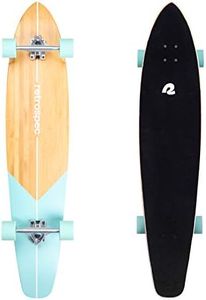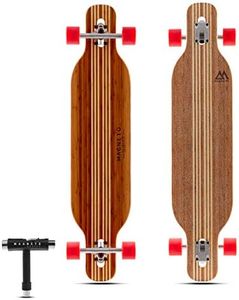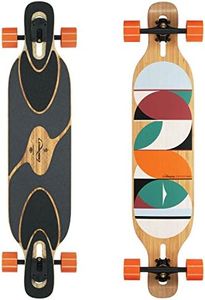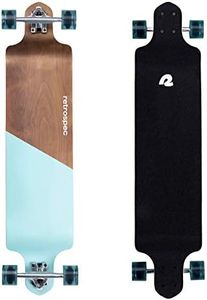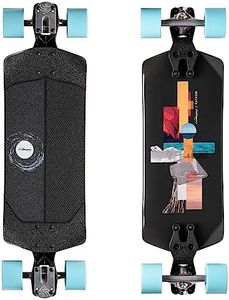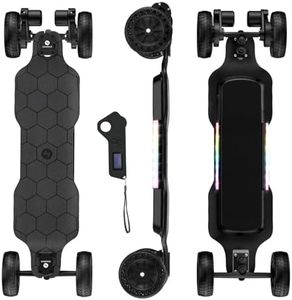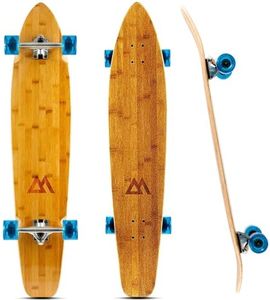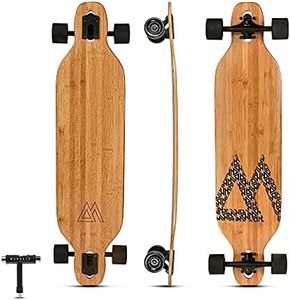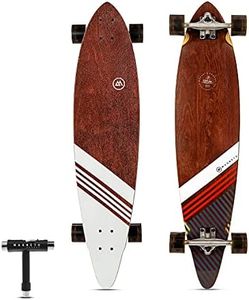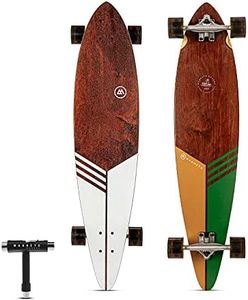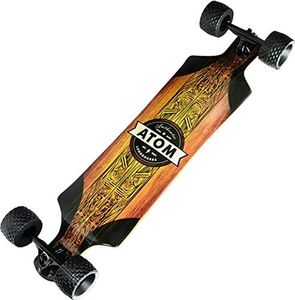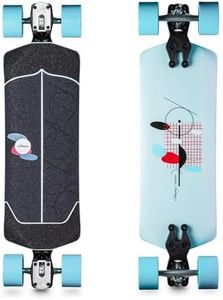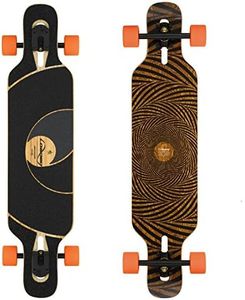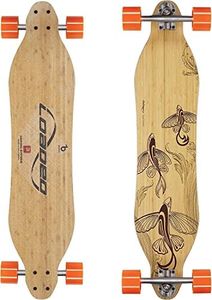10 Best Longboards 2025 in the United States
Our technology thoroughly searches through the online shopping world, reviewing hundreds of sites. We then process and analyze this information, updating in real-time to bring you the latest top-rated products. This way, you always get the best and most current options available.

Our Top Picks
Winner
Retrospec Zed Longboard Skateboard Complete Cruiser | Bamboo & Canadian Maple Wood Cruiser w/Reverse Kingpin Trucks for Commuting, Cruising, Carving & Downhill Riding
Most important from
2635 reviews
The Retrospec Zed Longboard Skateboard Complete Cruiser is designed with a blend of bamboo and Canadian maple wood, giving it a robust yet flexible deck. At 44 inches long and 10 inches wide, the deck provides ample space and stability for a comfortable ride. Its classic surfboard shape, inspired by 1950s Hawaii surfing culture, adds a nostalgic and stylish touch. The deck also features wheel wells, which help to avoid wheel bite and ensure a smoother ride.
The 8-ply construction combines strength with flexibility, making it suitable for various riding styles, including commuting, cruising, carving, and downhill riding. The reverse kingpin trucks are designed to enhance maneuverability and stability, especially during turns and at higher speeds. The longboard comes equipped with 70mm polyurethane wheels with a durometer hardness of 85A, offering a good balance between grip and smoothness. These wheels, combined with ABEC-7 precision bearings, deliver high-speed performance and accuracy.
One of the standout features is that it comes fully assembled, so it's ready to ride right out of the box. However, it's worth noting that the load capacity is capped at 220 pounds, which may not be suitable for heavier riders. Additionally, while the 85A wheels are great for grip, they might not fare as well on rougher terrain compared to softer wheels. The Retrospec Zed Longboard is best suited for adults of all skill levels who enjoy a versatile and stylish longboard for smooth rides on various surfaces.
Most important from
2635 reviews
Hana Longboard Collection | 42" x 9.5" | Longboard Skateboards | Bamboo with Hard Maple Core | Cruising, Carving, Dancing | Free Skate Tool | Twin
Most important from
2572 reviews
The Hana Longboard from Magneto offers a 42-inch long and 9.5-inch wide deck, crafted from a blend of bamboo and hard maple. This combination makes the board both sturdy and flexible, ideal for cruising and light freestyle or dancing. The deck design includes a subtle W-concave to secure your feet without compromising comfort. The board's soft 70mm 78A wheels provide a smooth ride across various surfaces, enhancing your skating experience and reducing wheel bite risks during deep turns.
Additionally, the longboard comes with a free skate tool, making maintenance more straightforward. Designed by skaters, the longboard embodies the Southern California surf culture with its aesthetic appeal and functional design. However, if you're an advanced skater looking for specialized tricks or stunts, this board’s primary focus on cruising might not fully meet those needs. With a load capacity of 275 pounds, it accommodates a wide range of users.
The board weighs 7 pounds, which adds to its ease of handling and portability. It's suited for both beginners and experienced skaters looking for a versatile option for various outdoor activities. With a high customer rating of 4.6 stars and being a best seller in its category, this longboard is a solid choice for those prioritizing a smooth and comfortable cruising experience.
Most important from
2572 reviews
Loaded Boards Dervish Sama Bamboo Longboard Skateboard Complete (80a in Heat, Flex 1)
Most important from
121 reviews
The Loaded Boards Dervish Sama Bamboo Longboard is a solid choice for those interested in carving and urban commuting. With its drop-through design, it offers stability and makes pushing easier, which is great for city riding. The flexible bamboo and fiberglass construction not only provides a lively feel but can also accommodate different riding styles with two flex options tailored for various weights. The 75mm Orangatang wheels deliver good grip and a smooth ride, enhancing performance during maneuvers.
This longboard is best suited for intermediate to advanced riders, which might be a drawback for beginners who could find it challenging to handle. The weight capacity is impressive, accommodating heavier riders, but the board’s flexibility may not appeal to everyone, especially those who prefer a stiffer ride. The design encourages tricks and dancing, but riders might need some practice to fully utilize these features.
For anyone looking to engage in carving, freestyle, or simply enjoy a smooth ride through urban landscapes, the Dervish Sama is a thoughtful investment.
Most important from
121 reviews
Buying Guide for the Best Longboards
Choosing the right longboard can greatly enhance your riding experience, whether you're a beginner or an experienced rider. Longboards come in various shapes, sizes, and styles, each designed for different types of riding. Understanding the key specifications will help you make an informed decision and find the best longboard for your needs.FAQ
Most Popular Categories Right Now
